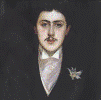Modern Languages and Literatures, Department of

French Language and Literature Papers
Document Type
Article
Date of this Version
1978
Citation
Kentucky Romance Quarterly 25:4 (1978), pp. 471–480.
doi: 10.1080/03648664.1978.9932323
Abstract
In the Histoire de Jenni (1775), his last major conte, Voltaire returns to a pattern similar in many ways to the one he had used in his first important tale, Micromégas. In both, as Vivienne Mylne has pointed out, two discussion scenes—the first near the beginning of the tale and a second more substantial one—are set in a narrative frame involving a voyage. Critics have generally attributed this return to a structure relying heavily on debate to convey his message to Voltaire’s increasing use of the philosophical dialogue in his later years. Perhaps a more fruitful approach, however, is to emphasize Voltaire’s reliance in Jenni on eloquence. To be sure, Freind’s debates with the Bachelor of Salamanca and the atheist Birton have much in common with dialogues like L’ABC or Le Dîner du comte de Boulainvilliers. But unlike these rather intimate discussions, the dialogues in Jenni are public events in which the opponents attempt to influence a large audience. And precisely because of this a more expansive, highly charged style is appropriate. In fact, both traditional aspects of eloquence are pressed into service—l’art de persuader and l’art de bien dire. In addition, Jenni contains numerous minor displays of eloquence, making its use the distinctive feature of the conte’s construction. So pervasive is eloquence that characterization and, to some extent, plot are shaped by its needs. I also hope to show that eloquence is especially suited to the defense of Voltaire’s deistic credo.


Comments
Copyright © 1978 University Press of Kentucky; published by Routledge/Taylor and Francis. Used by permission.